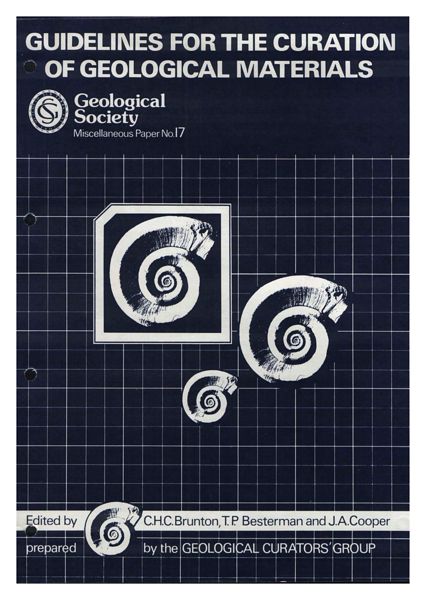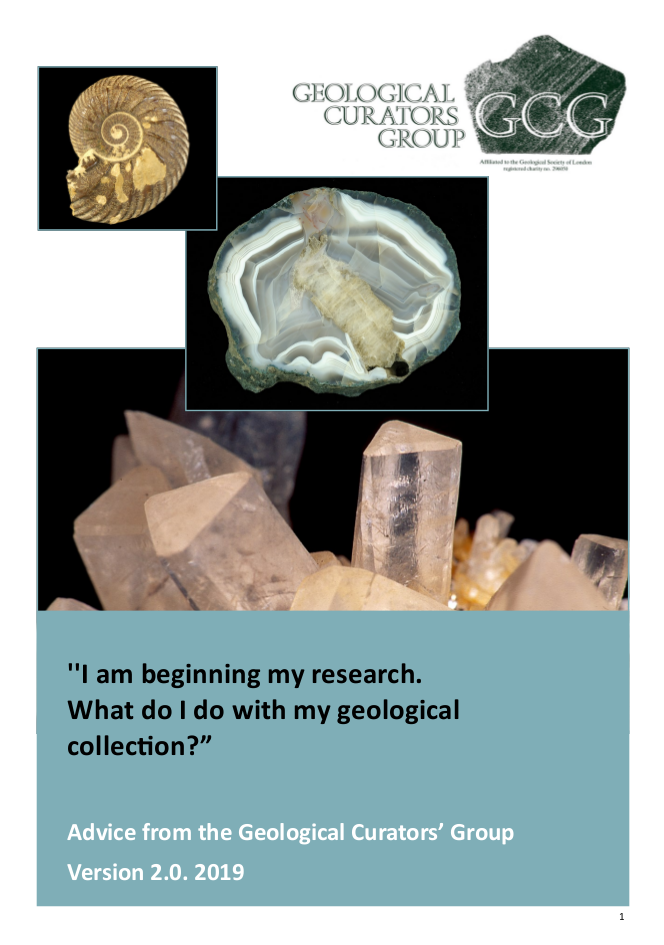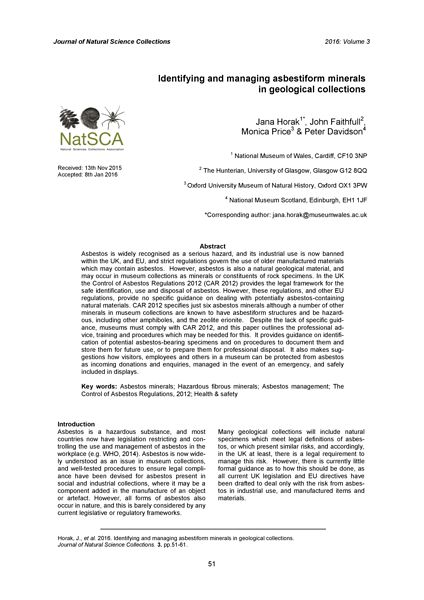Guidelines for the curation of geological materials
 Geological Society Miscellaneous Paper No. 17
Geological Society Miscellaneous Paper No. 17
Identifying and managing radioactive geological specimens
Identifying and managing asbestiform minerals in geological collections
The commercial trade in geological specimens
As part of our role working with geological collections, our expertise is often called upon to advise in the sale or purchase of geological specimens, whether this be to stock our museum shops with "pocket money" specimens or for more expensive "auction pieces". GCG Chairman and long standing committee member Matthew Parkes recently wrote a blog on the subject, which you can find here: https://geocollnews.wordpress.com/2018/11/13/contradictions-conundrums-and-lies/
Although GCG has no formal policy on the commercial trade of geological specimens, we would urge those doing so to ensure that their activities are conducted in an ethical manner. This might mean being sure that:
- Specimens are obtained from sustainable sources and in a legal fashion, depending on the collection location.
- Your supplier makes clear any alterations, modifications or enhancements that have been applied to the specimen.
- Those who collect the specimens are being rewarded fairly - this can be very important if your organisation has policies which relate to modern slavery practices in their supply chain.
- To ensure educational benefit, sufficient data is provided alongside the specimen - a specimen without data is just a pretty rock, with data it can inspire curiosity and wonder.
We appreciate this can be confusing to the non-specialist so we want to make it clear that we are here to help. If you have any questions, please e-mail us on
Finally, please note that GCG does not and will not endorse any specific dealers or suppliers and any claims made to the contrary are entirely false.
Commercial use of collections
Using your collections commercially can be a powerful way to capitalise on the uniqueness of your resource and generate valuable extra revenue. However there are a number of potential pitfalls which you should be aware of, including:
- Risks to your accreditation status for your entire collection or even entire museum
- Damage to collection objects and consequent loss of scientific data
- Dilution of significance
- Misrepresentation and exploitation
Many larger organisations will have IPR (Intellectual Property Rights) departments that can advise on this, or legal expertise can readily be hired in. However it should be noted that the committee and membership of GCG represents a wide spectrum of institutions, and countless years of combined knowledge and experience in museum collections. If you have any questions regarding the above, and would like an informal chat, then please contact us on
I am beginning my research...
 ... what do I do with my geological collection?
... what do I do with my geological collection?
Research projects for PhD, Masters and sometimes undergraduate students, often involve the collection of fossils, rocks and minerals. These may be accompanied by maps and field notebooks, thin sections, acetate peels, SEM stubs, cavity slide preparations and analytical powders, in addition to digital data. However, university departments often do not have the storage capacity or resources to look after geological collections and they sometimes get neglected or discarded after the project has ended or the student has left.
Unfortunately, as many researchers and curators know from bitter experience, this has often resulted in the loss of specimens which should have been preserved for the public good, by depositing them in an accredited museum or other institution with the appropriate facilities. This can easily be avoided with early planning and having the long-term value of the collection in mind.
This booklet is intended to help students, their supervisors, and indeed anyone who collects geological material, to manage their collections and associated data to ensure the best possible outcome for these valuable resources. In fact, if your research is publicly funded, it may be a requirement of your funding that data with long-term value, which includes physical collections and samples, are preserved and made openly available in a timely and responsible way.


